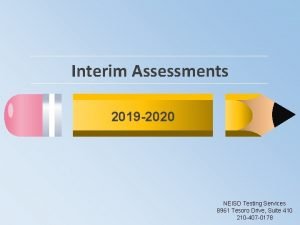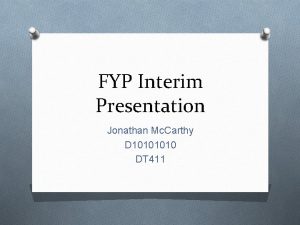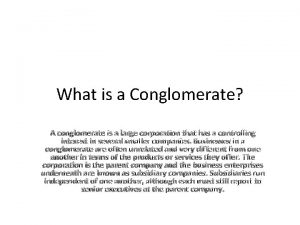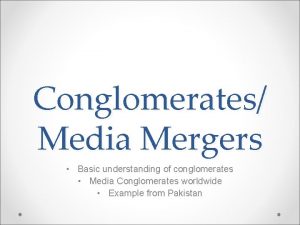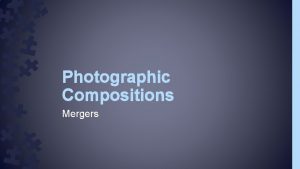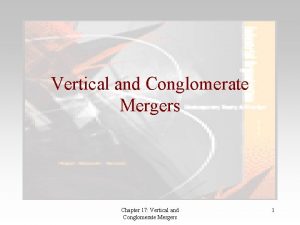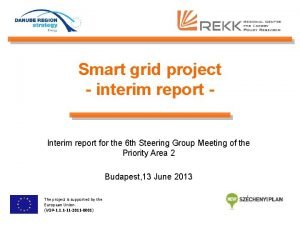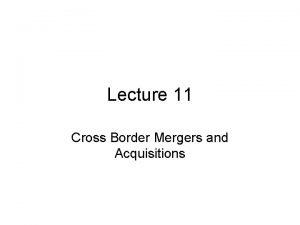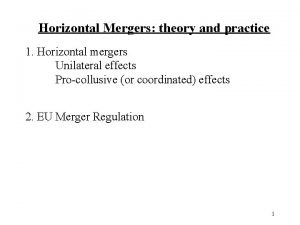2019 2020 MWG Project Conglomerate Mergers Interim Report








- Slides: 8

2019 -2020 MWG Project : Conglomerate Mergers -Interim Report from the Survey Results- 28 February 2020, Merger Workshop Japan Fair Trade Commission

Outlines of the Results of Survey (1) ◆ Response Rate: 53. 2% (33 / 62 authorities) ◆ Legal status on conglomerate mergers review; Ability to review conglomerate mergers? NO 4 [分類名] [値] (87. 9%) Mergers Guidelines(GL)? NO [分類名 ] 6 [値] (79. 3%) GL provide framework for assessing? GL discuss evidence? NO 3 [分類名] [値] (81. 3%) NO 5 [分類名] [値] (68. 8%) GL specifically address conglomerate mergers? NO [分類名] 7 [値] (69. 6%) GL provide case examples? [分類名] [値] NO(37. 5%) 10 2

Outlines of the Results of Survey (2) ◆ Statistics in last 5 years; # of authorities 12 28 all types of mergers conglomerate mergers 15 10 Prohibition cases 5 4 1 5 2 0 1 0 2 0 0 1 0 0 3 0 0 0 1 2 3 4 5 6 7 8 9 over 10 # of cases 21 # of authorities 20 Clearance 15 with 10 remedies 5 /conditions 0 9 3 0 5 4 1 -5 4 0 6 -10 2 0 11 -30 2 0 31 -50 4 0 51 -100 over 101 Structural remedies Types of remedies /conditions All types of mergers 57% Vertical mergers Behavioural remedies 88% 25% 0% # of cases 43% 12% Conglomerate mergers 0 10% 75% 20% 30% 40% 50% 60% 70% 80% 90% 100% 3

Outlines of the Results of Survey (3) Approach to the assessment of conglomerate mergers is still evolving on 68% authorities responding to the survey ◆ Importance of conglomerate assessment relative to horizontal or vertical mergers; Much lower priority Lower priority Same priority Higher priority ◆ relative to vertical/horizontal theories 0 [値] (50%) relative to horizontal theories [値] (56. 7%) relative to vertical theories [値] (23. 3%) relative to horizontal theories [値] (30%) relative to vertical theories [値] (26. 7%) relative to horizontal theories [値] (13. 3%) relative to vertical theories Not examimne conglomerate theories 0 4

Outlines of the Results of Survey (4) ◆ Theories of Harm; YES Foreclosure Tying/Bundling 92% Sharing confidential information 68% Other 32% 8% 92% Elimination of potential entrant 71% Other 12% 0% NO 8% 29% 88% 20% 40% 60% 80% 100% ◆ Considering Coordinated Conduct: 64% of authorities ◆ Considering Efficiencies: 84% of authorities 5

Outlines of the Results of Survey (5) ◆ Assessment of Theories of Harm Reviewed by internal documents/data from merging parties, and also, documents/data/interview results from third parties (customers, suppliers, competitors, analysts, etc. ) Theories of Harm Foreclosure (tying, bundling, sharing confidential information, etc. ) Elimination of potential entrant Assessment /Evidence Considering ability, incentive and likely effect: 100 % (all) of the authorities Ability - market power of the merging parties in each market - links between products, i. e. complementarity of products (synergies), customer overlap, customer preferences - competitors ability to take effective and timely counter strategies, etc. Incentive - profit of the merged party (balance between possible gains and cost of tying/bundling) - strategies/plans how the merging parties will market the products, etc. All over effect of foreclosure - proportion and significance of competitors who are foreclosed, and who are still able to provide a constraint over the merged party - significance of the input to the production process of downstream rivals, etc. Possibility of entry - entry costs/risks and profitability - specific entry plan, resources, capabilities, etc. Effect of elimination - number of competitors or number of other potential entrant in the market - the potential entrant’s existing presence in the relative market, etc. . 6

Outlines of the Results of Survey (6) ◆ Industries in which conglomerate concerns may be greater; - digital/IT sector (8 authorities) - education, energy, mass consumption products (food, household products, etc. ) (3 authorities) - healthcare, financial service (2 authorities) ◆ Case Studies; Some cases from member authorities including digital/IT platform, media, foods, chemical products, machinery components, etc. ◆ International Cooperation; 52% of the authorities have not cooperated with other competition agencies on conglomerate mergers review 7

◆ Teleseminars - “Conglomerate mergers” on October 29, 2019 - “Acquisitions of nascent competitors” on January 21, 2020 (also a part of webinar series of the digital mergers project) ◆ Report - Survey results - Discussion points of the teleseminars - Breakout session in the 2020 annual conference 8

